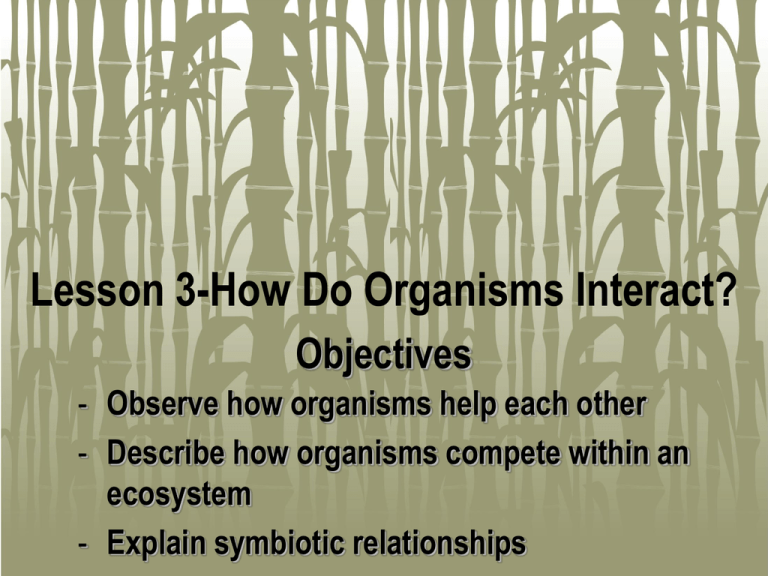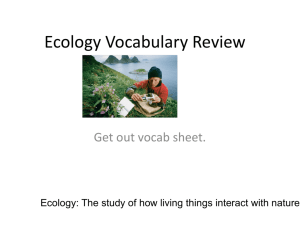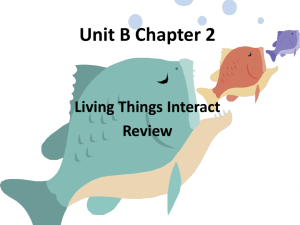Lesson 3-How Do Organisms Interact? Observe how organisms
advertisement

Lesson 3-How Do Organisms Interact? Objectives - Observe how organisms help each other - Describe how organisms compete within an ecosystem - Explain symbiotic relationships Vocabulary • Competition • Symbiosis • Parasite • Host Lesson 3 A. Limiting Factors – Competition for Resources 1. In an ecosystem, organisms compete for space, light, food, water, air & nutrients. 2. Competition is the struggle among organisms for limited resources in an area. 3. Every ecosystem and species must compete to stay alive 4. A predator is an animal that feeds on other living animals 5. Prey is an animal that gets eaten by the predator. Vocabulary • 166-Competition – The struggle among organisms for limited resources in an area. Write this Question in your books… Q: Why does an increase in the number of prey affect the number of predators? A: The more prey there are, the more predators can be supported. Lesson 3 B. Organisms Interact to Meet Their Needs 1. Some organisms live together in a relationship called symbiosis. 2. Symbiosis is a close relationship between organisms of different species in which one or both of them benefit. There are 3 types of Symbiosis (you will learn the 3 one tomorrow!). 3. Parasitism: one species benefits while the other is harmed 4. Parasite is an organism that lives in or on another organism 5. Host is the organism that the parasite lives on 6. Mutualism: both organisms benefit rd Vocabulary 168 - Symbiosis – A close relationship between organisms of different species in which one or both of the organisms benefit. 168 – Parasite – An organism that lives in or on another organism. 168 – Host – The organism that a parasite lives on. Write this Question in your books… Q: What effect does mutualisms have on organisms? A: Both organisms benefit. Insta-Lab Model Behavior • Think of a relationship between organisms that shows mutualism. Then make a model of this relationship with clay. How does this relationship benefit both organisms? Lesson 3 C. Neither Help nor Harm 1. The third type of Symbiosis Commensalism: one organism benefits and the other organism is neither helped nor harmed. Write this Question in your books… Q: How are the effects of commensalism and parasitism different? A: In commensalism, one organism benefits, and the other is neither helped nor harmed. In parasitism, one organism benefits, but the other is harmed. Lesson 3 Review In your groups, you will work on numbers: 1, 3-6 When you are finished, you may read, draw in one of the illustration books, work on other unfinished work or get on one of the computers if available.







